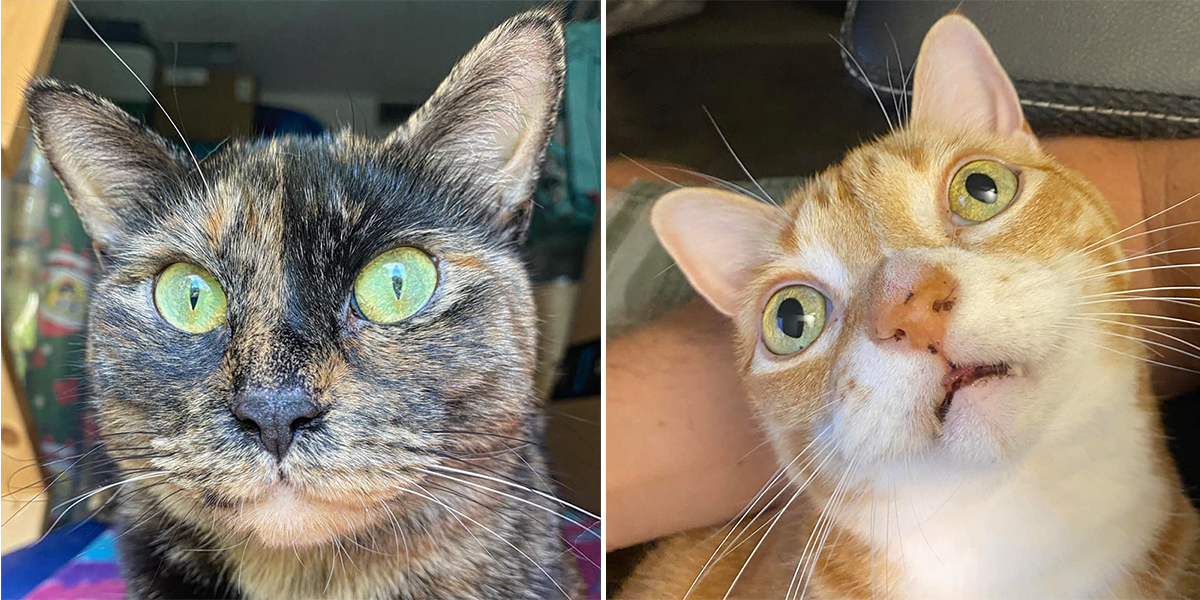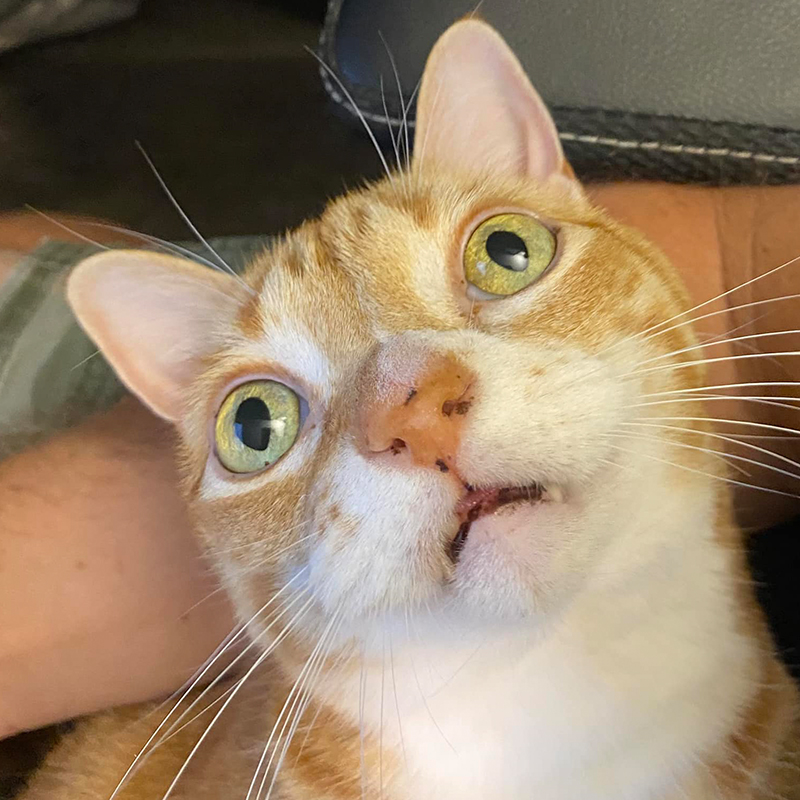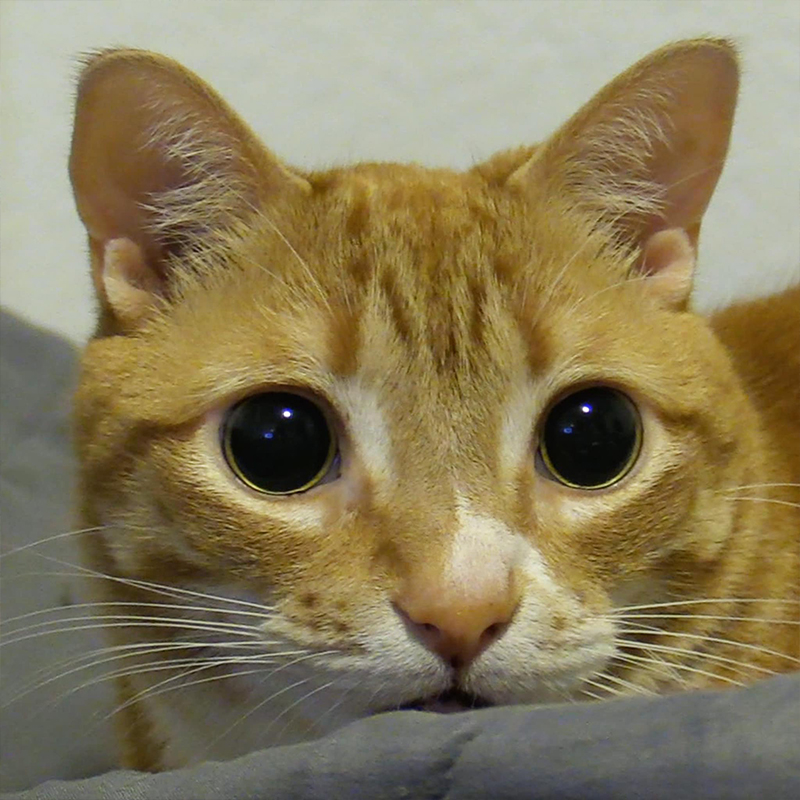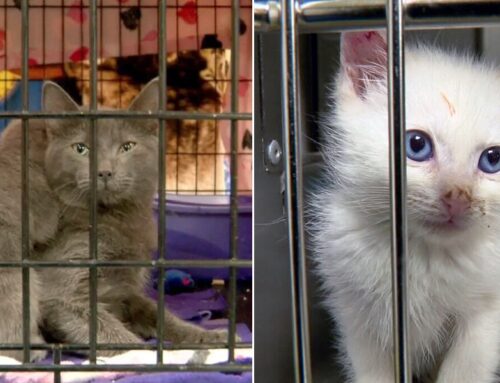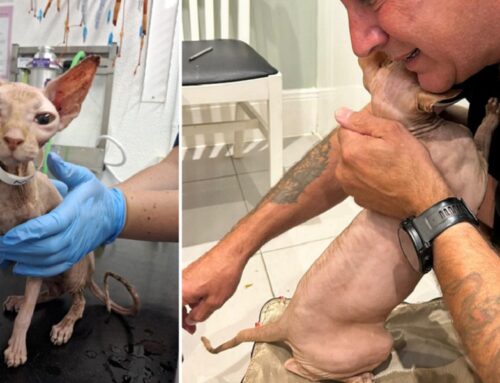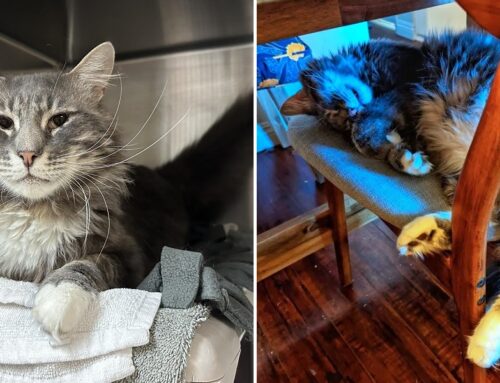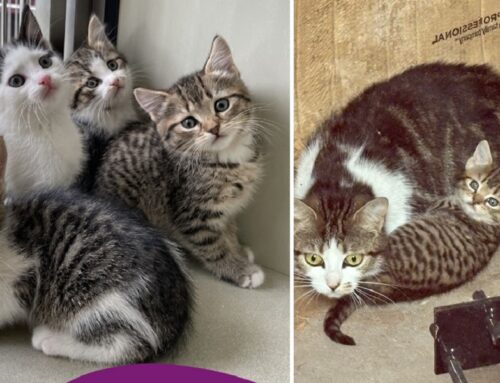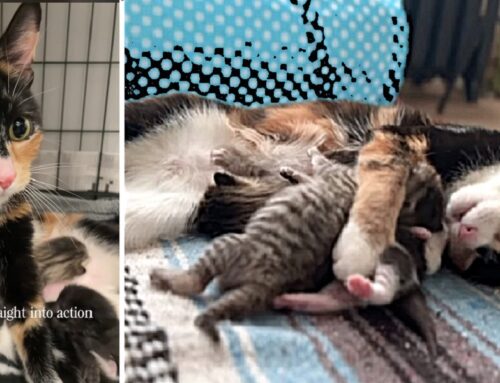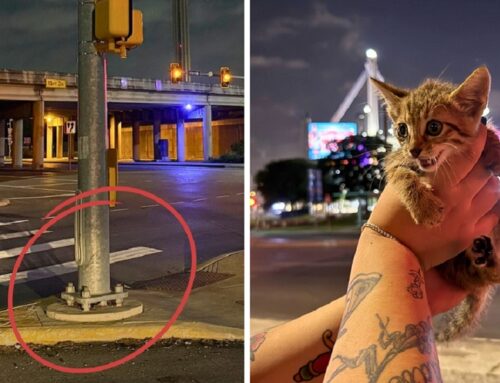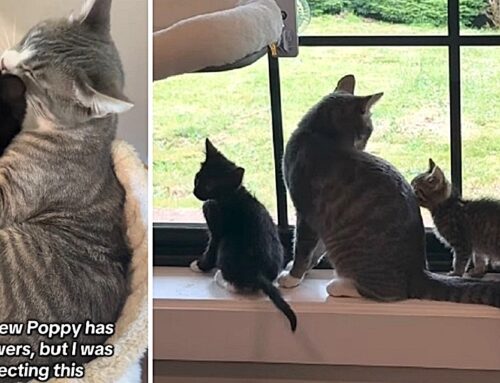What colors can a cat see? And, are those cat and dog vision filters on social media accurate?
Well, we can’t be absolutely certain how another person views the world, much less a cat. And color vision can be uniquely different for individuals. However, the current understanding is that cats see colors somewhat like a person who is colorblind. A cat likely sees soft, muted colors with an emphasis on greens and blues. However, warm tones of red and pink are visible too but a little muddy.
“A cat’s vision is similar to a human who is color blind. They can see shades of blue and green, but reds and pinks can be confusing. These may appear more green, while purple can look like another shade of blue,” shared Business Insider.
So now we know what colors a cat can see, but we still have no idea what Marmalade is looking at sometimes.
“We’ll never get tired of this face… also I have no idea what he’s looking at on the ceiling?! 🤔🤷♂️”
Image of Marmalade via Facebook/Cole and Marmalade
More Colors Than Blue and Green
A world of greens and blues is how a cat’s vision is portrayed with the popular TikTok cat vision filter. As you can see below, the cat vision filter makes everything bright greenish like it’s always St. Patrick’s Day or something. But cats don’t all have the Luck O’ the Irish, or do they?
Video by Mayla and Finley showing the cat vision filter:
A Cinematographer’s Cat-Like Lens
In reality, this bright blue-green world is probably much more muted, nuanced, and warmer than this filter suggests. As we’ve shared before, a cat may see the world as if through a soft lens, sun-drenched and desaturated. Today, TV and movies are so often filmed with a similar muted color scheme for artistic, moody effect, dubbed “intangible sludge.”
In effect, many cinematographers are unknowingly imitating a cat’s vision!
Here’s a funny classic about “What Cats See” just for fun.
Do Cats and Dogs See the Same Range of Colors?
For a long time, scientists thought cats were like dogs with dichromatic vision (two colors). We know dogs are dichromats since they only have two types of cones in their eyes to detect yellow and blue. Thus, they don’t detect red or green like we do, and those colors may look brownish or grey. So, all those colorful dog toys may only look that way to us. But cats may have a wider visible color range.
“Boop Jugg’s nose! 👉”
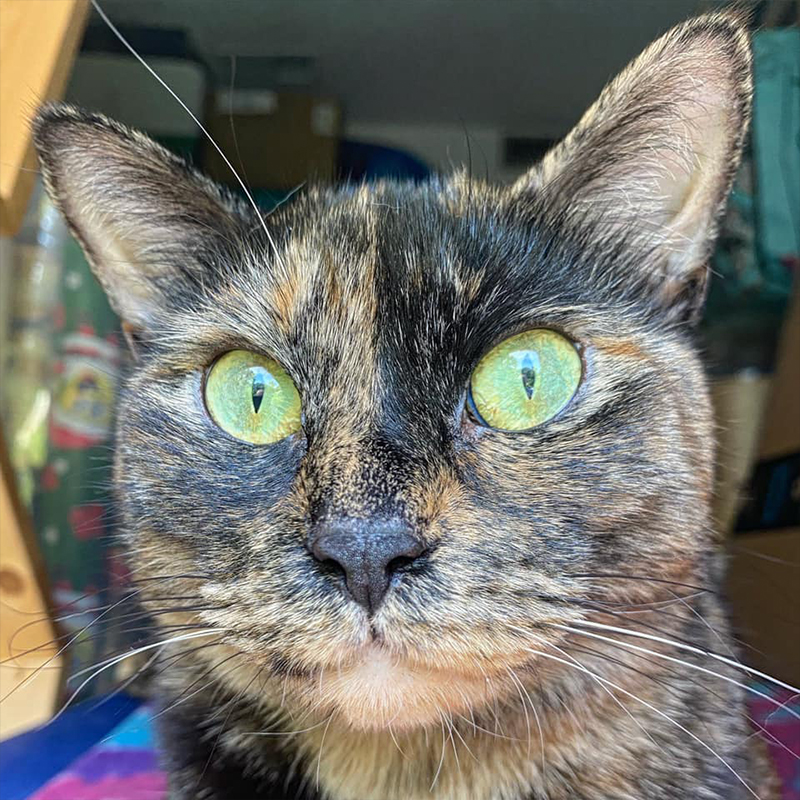
Jugg via Facebook/Jugg and Zig Zag
In recent years, research has determined cats may have trichromatic vision like us, seeing red, green, and blue. To put it simply, we see these colors with three kinds of cone cells in the retina. Research determined cats can distinguish red and orange from cyan blue, which means they have the cones needed to detect warmer tones, not just blue and green. As noted, the colors are much toned down compared to an average human’s saturated, technicolor experience.
Below, the video by Buzz60 explores images showing how a cat sees:
Night-Vision SupurrPowers!
As we know, cats (and dogs) have Night Vision SupurrPowers due in part to a thin reflective layer at the back of the eye, behind the retina. It’s called the “tapetum lucidum,” and people don’t have it. In Latin, it means “bright carpet.”
This magic carpet of cells is like a mirror and gives most cats or dogs a glowing greenish effect when they are photographed with a flash. The exceptions are blue-eyed cats and dogs, whose eyes may flash red like ours due to a lack of pigment in the tapetum.
Video by Can’t Stop Laughing showing multiple cats’ glowing eyes at night:
A Trade-Off for Night Owl Prowling
The tapetum lucidum gives cats an incredible night vision advantage we can only achieve with wearable technology. It’s a magic mirror effect that magnifies and bounces light around in the eye to maximize any available light. However, the trade-off is their vision can be blurry, particularly close-up and far away.
“When you move your foot one inch under the duvet…” via Facebook/Cole and Marmalade
Other advantages for a cat are their large, vertical pupils, which open wide like an owl to let in even more light at dusk when they go hunting (or bouncing off the walls at three in the morning). Like dogs, they have far more rod cells in their eyes than we do ( six to eight times more) for superb night and peripheral vision.
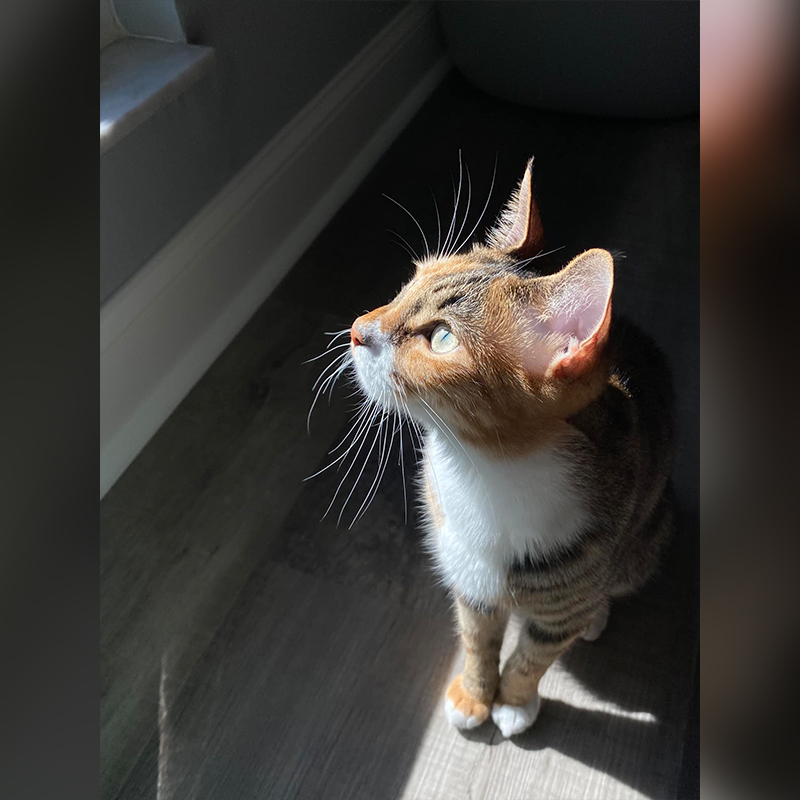
Calypso via Facebook/Cole and Marmalade
But the question is, would you trade a human’s relatively sharp color vision for the ability to see like a cat at night without any night-vision goggles? Well, if we needed to hunt rodents and birds at twilight, then maybe so. But since that’s not happening anytime soon, we’ll stick with what we’ve got. And we’re very thankful that our world is so much more colorful having lovable cats in it.
Here’s What Kittens Do at Night, featuring baby Maz and Calypso by Cole and Marmalade:


